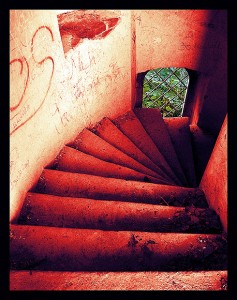 Through Halloween, the castrated remnants of the Celtic influence on Western culture play out through communal rituals: of giving gifts to strangers, protecting the house with carved gourds that resemble spirits, and dressing in costumes to disguise ourselves after nightfall as a wandering ghost.
Through Halloween, the castrated remnants of the Celtic influence on Western culture play out through communal rituals: of giving gifts to strangers, protecting the house with carved gourds that resemble spirits, and dressing in costumes to disguise ourselves after nightfall as a wandering ghost.
But we are also culturally predisposed to dream darkly, or at least confrontationally, during this holiday.
The Origins of Halloween
Halloween is the Anglicized celebration of the Celtic new year, known today as Samhain. Early November is traditionally the final harvest in Europe, and also marks the calender as a “cross-quarter day,” in this case in between the fall equinox and the winter solstice.
So, we can say that Halloween is the marking of an important crossroads, into winter, into darker nights, and into days of eating a lot of boiled turnips and oatmeal.
In Celtic mythology, this dayworld shift is mirrored by another cross-roads, a time when the waking world and the Otherworld, the realm of the dead, intersect. Halloween was also known as Puca Night. An Irish folklorist from the 1870s suggested, “the dark and sullen Phooka is then particularly mischievous and many mortals are abducted to fairy land.” (from Wilson, p. 90). This wasn’t necessarily a bad thing, as the successful voyager between realms was often given a gift, such as music, greater intelligence, or a new sense of life direction.
Dreams of the Underworld
 Dreams played deeply into this time of year in traditional Celtic cultures, because it is often in dreams that the crack between worlds reveals itself. Ancestors, both benevolent and snarky, show up, and for those who are not afraid to listen, knowledge is loosened from unexpected sources.
Dreams played deeply into this time of year in traditional Celtic cultures, because it is often in dreams that the crack between worlds reveals itself. Ancestors, both benevolent and snarky, show up, and for those who are not afraid to listen, knowledge is loosened from unexpected sources.
In dreams, trips to the underworld have been recorded in many cultures beyond the Celtic framework, suggesting a neurotheological substrate to this mythology. But in the West, descent is not valued, and even vilified. To paraphrase wilderness guide Bill Plotkin, our culture celebrates going up (towards transcendence, and the white light of spirit) but hates going down (toward the earthly truths, and soul).
We already prime ourselves for confrontational dreams during Halloween, especially through the ritual of watching scary movies before bed.
So, if the dream arises, take the staircase down into the basement: who waits for you there?
references:
Devereux, Paul. (1996) Revisioning the earth – a guide to opening the healing channels between mind and nature. New York: Simon & Schuster.
Plotkin, Bill. (2003) Soulcraft: crossing into the mysteries of nature and psyche. Novato: New World Library.
Wilson, Peter Lamborn (1999) Ploughing the Clouds: search for the Irish Soma. San Francisco: City Lights Press.
I didn’t realize that dreams were thought of as a sort of portal to the world of the spirits. Very thoughtful article. 🙂